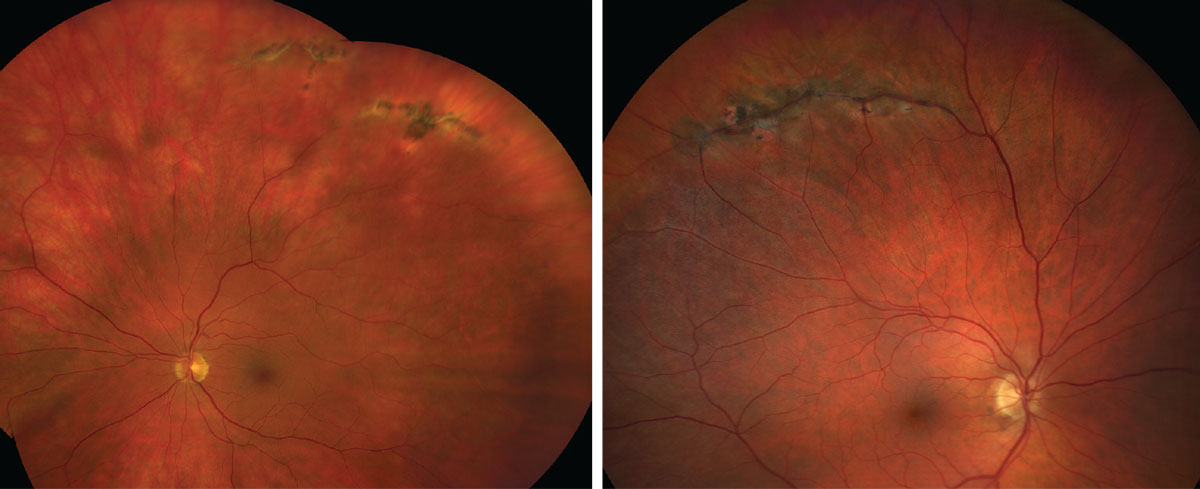 |
Patients who are more likely to develop retinal detachment or retinal tear after cataract surgery include those with male gender, younger age, lattice degeneration (pictured), hypermature cataract, posterior vitreous detachment and high myopia, study finds. Photo: Anna Bedwell, OD. Click image to enlarge. |
A study recently published in Ophthalmology Science evaluated the incidence of two rare post-cataract surgery complications, rhegmatogenous retinal detachment (RRD) and retinal tear, using data from the IRIS registry. The researchers identified certain demographics, ocular comorbidities and intraoperative factors that appeared to increase the likelihood of these events, including male gender, younger age, lattice degeneration, hypermature cataract, posterior vitreous detachment (PVD) and high myopia.
The retrospective cohort study included 3,177,195 eyes of 1,983,712 patients from the registry, all of whom were at least 40 years old (90% over 60 and 52% over 70) and underwent cataract surgery between 2014 and 2017. Within one year of the procedure, 0.21% of the cohort developed RRD–equating to one in 500 cataract surgeries–and 0.17% developed retinal tear without RRD.
“Prior studies (before modern-day small-incision cataract surgery) have reported the one-year incidence of RRD after cataract surgery to range from 0.6% to 1.7%, representing a more than 30-fold increased risk of RRD when compared with rates in the general population of 0.007% to 0.018%,” the researchers wrote in their paper. “However, more recent studies have demonstrated that this incidence rate may be declining.” The incidence rate observed in the present study also provides evidence of this trend.
When the research team performed multivariable logistic regression on the data, they found that the following factors increased the risk of RRD and retinal tear, respectively: male sex (odds ratio [OR]: 3.15 and 1.79), younger age compared with patients over 70 (OR: 8.61 and 2.74), peaking at age 40 to 50 for RRD (OR: 7.74 to 9.58) and age 50 to 60 for retinal tear (OR: 2.52 to 2.98).
The researchers reported in their paper that “increased odds of RRD were observed, in order of magnitude, for procedure eyes with lattice degeneration (OR: 10.53), hypermature cataract (OR: 1.61), complex cataract surgery CPT code 66982 (OR: 1.52), PVD (OR: 1.24) and high myopia (OR: 1.2).” Approximately 1.44% of patients with lattice degeneration—the most significant RRD risk factor observed—developed the condition within a year post-op.
As for retinal tear, lattice degeneration also conferred the highest odds (OR: 43.86). Based on these data, the researchers recommend careful monitoring for these patients after cataract surgery, especially if the patient is a young male.
The study authors concluded that these updated incidence rates and risk factor data “may be useful during the informed consent process for cataract surgery and help identify patients at higher risk for retinal complications.”
Morano MJ, Khan MA, Zhang Q, et al. Incidence and risk factors for retinal detachment and retinal tear after cataract surgery: IRIS Registry Analysis. Ophthalmol Sci. April 2023. [Epub ahead of print]. |

